Sanya Museum of Contemporary Art, China
January 21—May 20, 2018
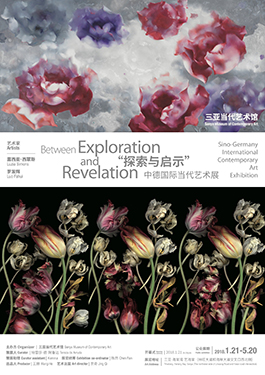
exhibition invitation
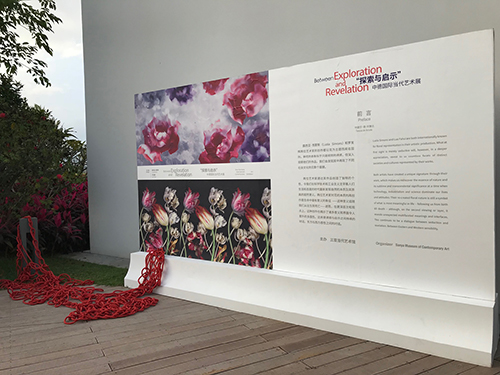
installation view
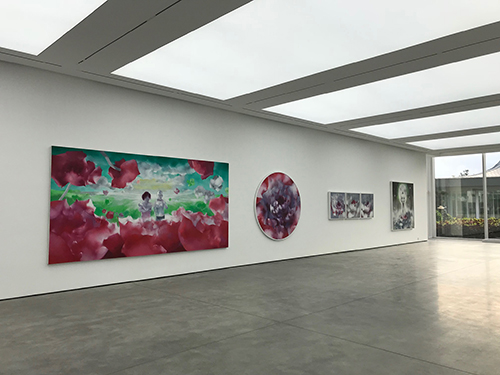
installation view
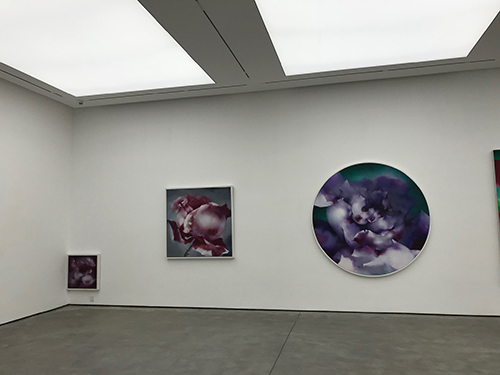
installation view
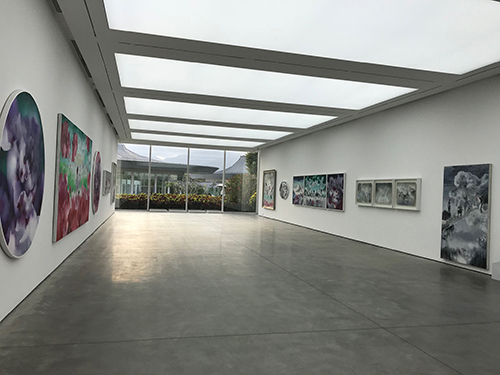
installation view
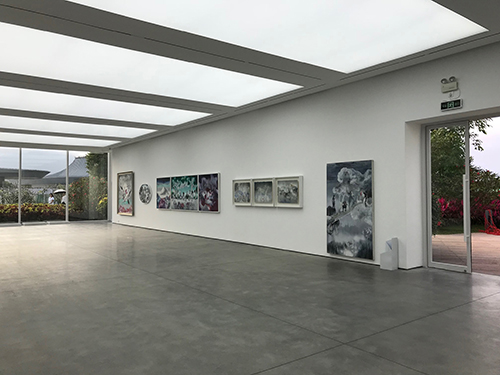
installation view
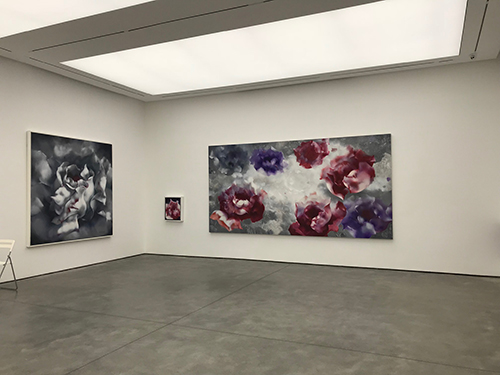
installation view
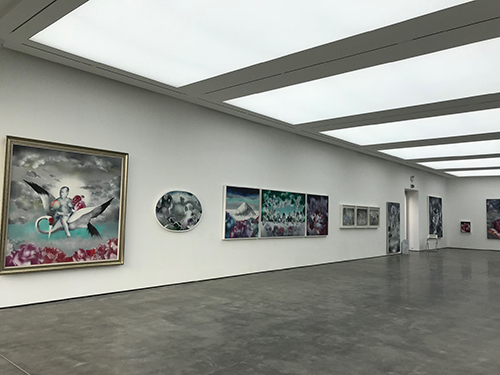
installation view
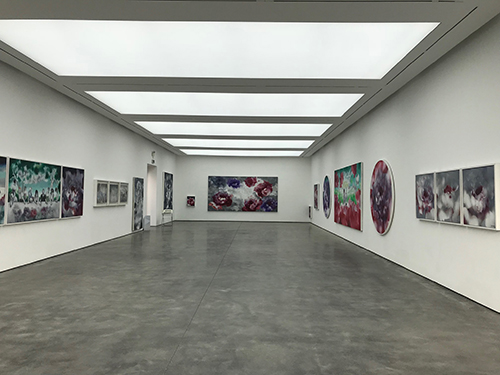
installation view
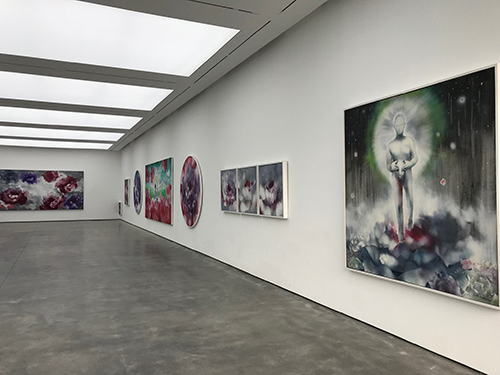
installation view
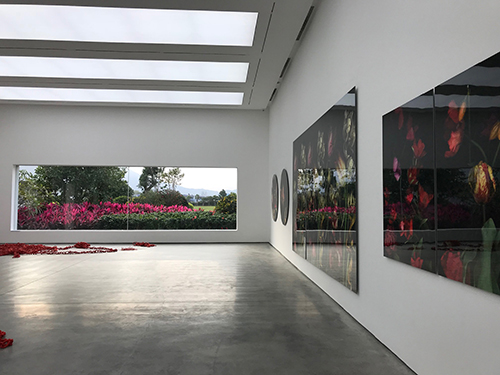
installation view
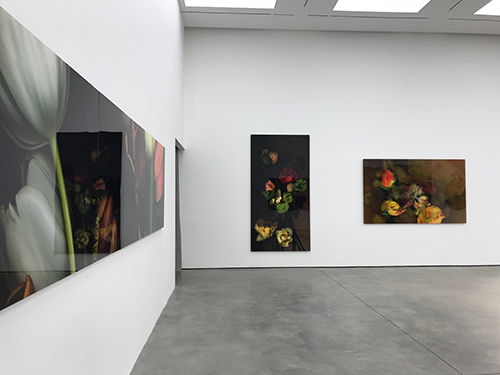
installation view
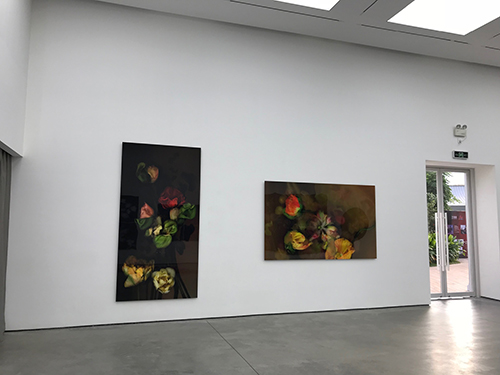
installation view
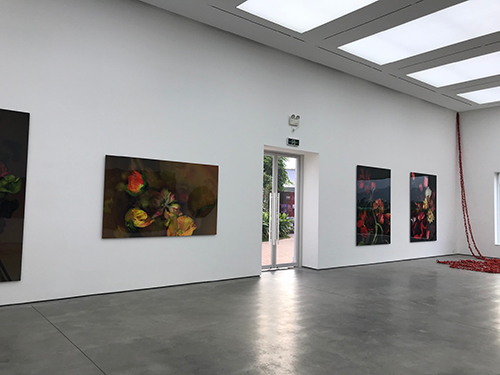
installation view
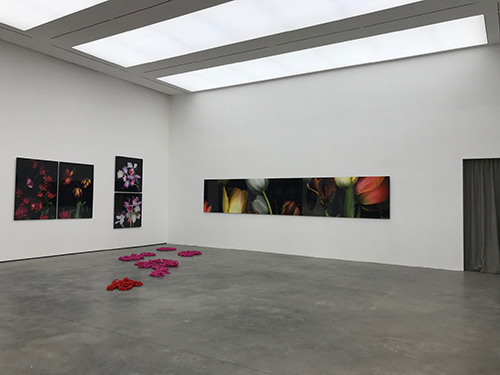
installation view
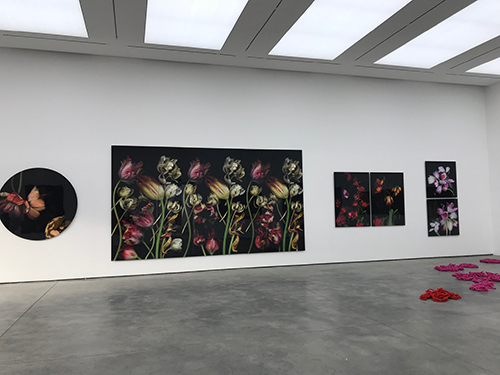
installation view
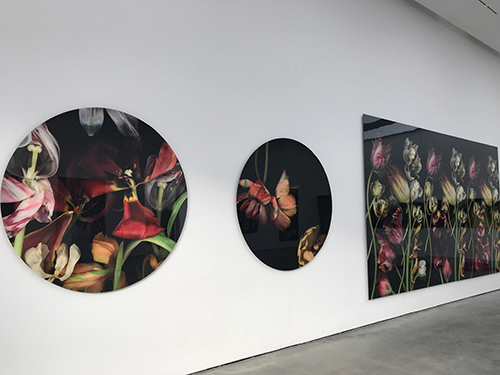
installation view
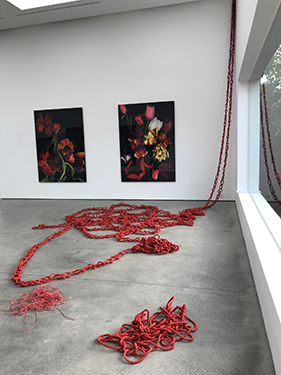
installation view
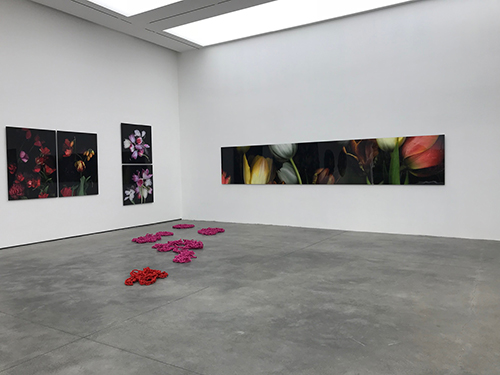
installation view
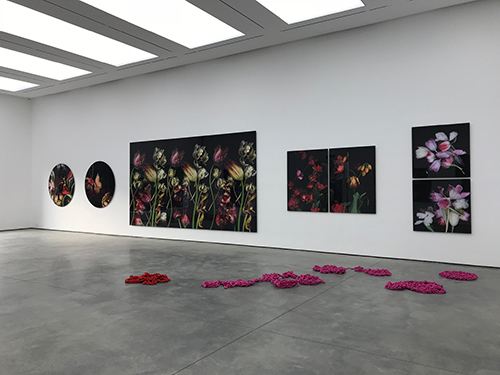
installation view
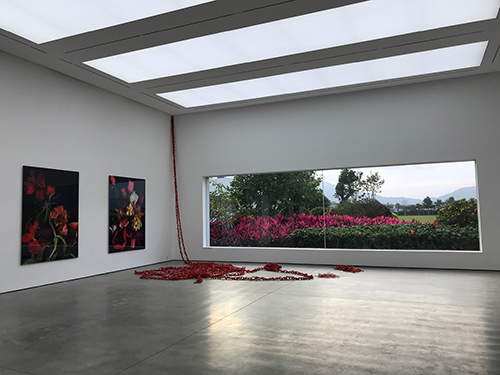
installation view
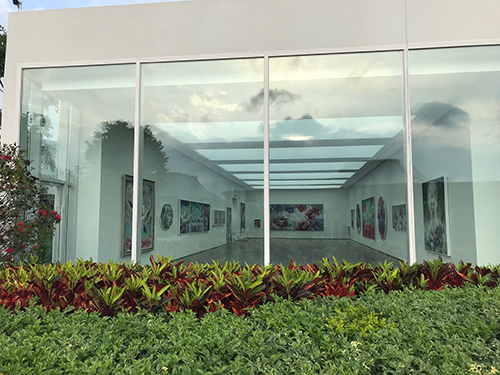
installation view
Download invitation [jpg]
Download exhibition catalog [pdf]
Artists: Luzia Simons, Luo Fahui
Curator: Tereza de Arruda
Curator assistant: Kenna
Exhibition coordination: Chen Ran
Producer: Wang He
Artistic director: Jing Qi
LUZIA SIMONS - LUO FAHUI
Dialogue Between Seduction and Revelation
It is with great honor that I accepted the invitation to curate a show at the Museum MOCA Sanya, during the period that marks the beginning of spring in China. For the arrival of one of the most desired seasons of the year, a moment that symbolizes renewal, innovation and revitalization, it is an almost obvious choice to present works of art that enhance nature. Flowers are virtually inevitable in this context; there are artists that represent them faithfully or full of metaphors. In response to this challenge, I invited two artists to participate in this exhibition – Luzia Simons and Luo Fahui – both internationally known for floral representation in their artistic production. What at first sight is merely seductive will, however, in a deeper appreciation, reveal to us countless facets of distinct societies and cultures represented by their works.
The choice of these two artists is not mere chance but a result of following their artistic production for more than a decade, through innumerous visits and conversations in their studios, exhibitions and other contexts where their works have been shown. It is also in these circumstances that the two artists became aware of the existence and production of each other, which makes this challenge somewhat more exquisite.
Challenges are propellers of ideas and actions, without which human evolution would be stagnant and linked to the same existing and pre-established situations and contexts. This exhibition pays homage to the artists Luzia Simons and Luo Fahui, whose art, and especially the contemporary art they produce, takes on the objective of, and commitment to, a search for a new cultural legacy of miscegenation, the breaking of borders and interdisciplinarity.
The Brazilian-born artist Luzia Simons has developed a broad international artistic career, starting in Europe, where she has lived since 1976. She spent the first ten years in France and subsequently lived in Stuttgart in Germany. She currently lives and works in Berlin. Her work is fundamentally based on photography and has been widely revered for decades through its constant presence in individual and group exhibitions, and now forms part of several state and private collections in Europe and Brazil.
Luzia Simons’ artwork originates from a relentless search for techniques to create images that are faithful to her imagination, experiences and expectations, following unusual paths that lead to experimental solutions, such as the use of unexpected tools to capture these images in ways other than via the conventional camera. She created the series Stockage in 1996 and, since then, has untiringly developed new pictorial modalities of the series. To elaborate her compositions, the artist is a precursor of the technique called scanography, making use of a scanner to capture the image, which is then printed by inkjet and laser in both small and monumental format. This technique allows the artist to reproduce flowers in a uniquely different way to a conventional photograph, capturing the details, shapes and colors with extreme depth perspectives, allowing the viewer to take a meditative dive into the details and providing a new way to look at the peculiarity of nature through these flowers. In these pictures not only does one see the tulips in their most beautiful state, but also the imperfections and decadence of irreversible nature.
During the production process, Luzia Simons juxtaposes flowers at different stages of their existence – aged, fresh or still in plump buds – vivid with color and abundant with curved petals, often accompanied by particles of pollen expelled during the manipulation of the flower on the scanner’s surface. The transitoriness of a flower that will eventually wilt and die is visible, and presented in contrast to this are images of fresh tulips that impregnate their habitat, employing their supposed eternal beauty; seductive and tempting, as is the Stockage series, which fascinates and seduces by its beauty and originality, independent of the place and context where it is exhibited.
The historical background of the tulip also attracted the attention of the artist: the first tulip bulbs and seeds were sent to Vienna in 1554 as a gift from Ogier de Busbecq, the ambassador of Holy Roman Emperor Ferdinand I, to the sultan of Turkey during the era of the Ottoman Empire. Soon this luxury object spread to Antwerp and Amsterdam, where it led to Tulipmania; a period in the Dutch Golden Age during which contract prices for some bulbs provoked the first recorded speculative bubble and then dramatically collapsed in February 1637. Due to this historical background, the tulip is now rooted in our imagination as a genuinely Dutch product. It is precisely a nomadic and multicultural journey like that of the tulip that is the focus of the artist; migration and ephemerality appear subtly throughout her artistic production. The strong autobiographical nature of her work does not go unnoticed. For her, the work Stockage becomes a milestone of her own transitoriness, multicultural intersection and interdisciplinarity. Stockage imposes itself in various contexts related to historical, aesthetic and conceptual content. In a post-globalized world, the layered cultural accumulation is worthwhile to create and disseminate cross-cultural identity. Her performance in this exhibition, designed for the Museum MOCA Sanya, is part of this process and will certainly reinforce the introduction of Stockage into new horizons throughout Asia.
The vivid, organic, ornamental elements that exist in Luzia Simons’ work are also presented in this exhibition, where they gain an independent character and separate themselves from bidimensional representation. In the video Blacklist, different flowers lay on a surface and assume a slow-motion movement followed by a strong backlight, which accentuates the carefully composed choreography of the elements. The audience’s attention is captured by the organic beauty and autonomy. Even more independent and self-sufficient is the object Le déjeuner sur l’herbe, formed by industrial rope intrinsically composed and released from any environment as a self-developed ornament. It invades public and private spaces with no formality, out of a necessity to expand and conquest.
Luo Fahui is an artist who has developed his own identity and working method, maintained and advanced by an introspective way of working. Early on, he made the decision to focus on his universe and to represent this mainly through painting. He seeks motifs from everyday life within the view of his surroundings. Nature, flowers and his garden are the leitmotifs of the images, but they are often metaphors for his complex experiences, collected during the course of his development.
Luo Fahui was born 1961 in Chongqing, Sichuan. He studied painting at the Sichuan Fine Art Institute and graduated in 1985. As a child, he experienced his country influenced by the principles of the Cultural Revolution, launched in 1966 and lasting until 1976. In 1978, Deng Xiaoping introduced new laws and developed dialogues with those unable to fit into the system who had been labeled as personae nongratae. As an adult, the artist reflected on the first changes initiated by the opening up of China and its re-positioning within a global context. This country is still a mystery; a nation where feudal traditions still exist in conjunction with the laws introduced by the Communist Party and which has become, at the same time, a world economic superpower. Renowned international art institutions are engaged in exhibiting Chinese contemporary art, in an attempt to build an effective bridge between Chinese culture and their own. In this current dynamic, artists have an excessive responsibility as mediators, trying to capture content themselves, review their own history and transfer all of this, through their works, to the audience.
Luo Fahui, in contrast to his avant-garde colleagues, avoided many of the artistic movements and career development paths, such as establishing a presence in art centers in Beijing and Shanghai or even abroad. Although he has shown his work extensively in China and overseas, he decided to stay in Sichuan and establish his artistic repertoire in Chengdu, where he discovered the appropriate conditions and inspiration for his work. Chengdu, a city with over 14 million inhabitants, is the capital of the Chinese province of Sichuan. It has become Chongqing's economic center in West China. It also maintains a very active art scene. Sichuan University of the Arts was founded in 1940 and is considered one of the eight most prestigious Chinese art colleges. As a result, there are many renowned artists living in the city, working at the art school and stimulating the local art scene, through internships and new exhibitions. They are the observers, analysts and mediators of this environment, leading us to the bright spectrum of contemporary Chinese culture and serving as witnesses to the country's present reality. They lead us to deeper discussions, which will be important components of the process of rapprochement of both cultures, East and West. Regardless of international dialogue with China, there is still a great deal of debate between tradition and innovation, as China has for decades developed its own culture and consciousness, which forms part of its identity, far away from the globalized world.
Luo Fahui works primarily in oil, and his paintings reveal images of pearly, fleshy flowers as bodies incorporated in an amorphous gray background with a touch of color and bloodshed on their forms. The organic universe represented by him – human or nature – is not necessarily the imitation of nature itself, but one composed by his imagination and anima, which the psychoanalyst C.G. Jung would assume to be the feminine part of a man's personality, composed of the male and female aspects of the psyche. The results oscillate between the surreal, grotesque, kitsch, poetic and sensitive. The naked bodies seem to be in metamorphosis, combining their shape and borders with nature where it is present. The faces are as abstract as possible, revealing no precise traces or mimicry. Meanwhile, the represented flowers are allusions to lust, loneliness and violence. Their vivid red petals look like abstract stains. The content exudes sensuality through its volume, guts, puddles, openings and orifices; simply because nature itself is the origin of a unique, native, sensual beauty. The erotic fertility of flowers and human beings emphasized in his paintings tend to blind the reason – conscious or not of their beauty, magically developed by the bright ductus of the brush and the softness of the delicate palette of colors.
Luo Fahui, like Luzia Simons, has created a unique signature through his work, which makes us rediscover the essence of nature and its sublime and transcendental significance at a time when technology, industrialism and science dominate our lives and attitudes. Their re-created floral nature is still a symbol of what is most meaningful in life – following us from birth till death – although, on the second viewing or layer, it reveals unexpected multifaceted meanings and interfaces. This continues to be a dialogue between seduction and revelation. Between Eastern and Western sensibility.
—Tereza de Arruda, Berlin, December 2017
Sanya Museum of Contemporary Art
Yihaitang, Haitang Bay, Sanya, China
Exhibition period: January 21—May 20, 2018
